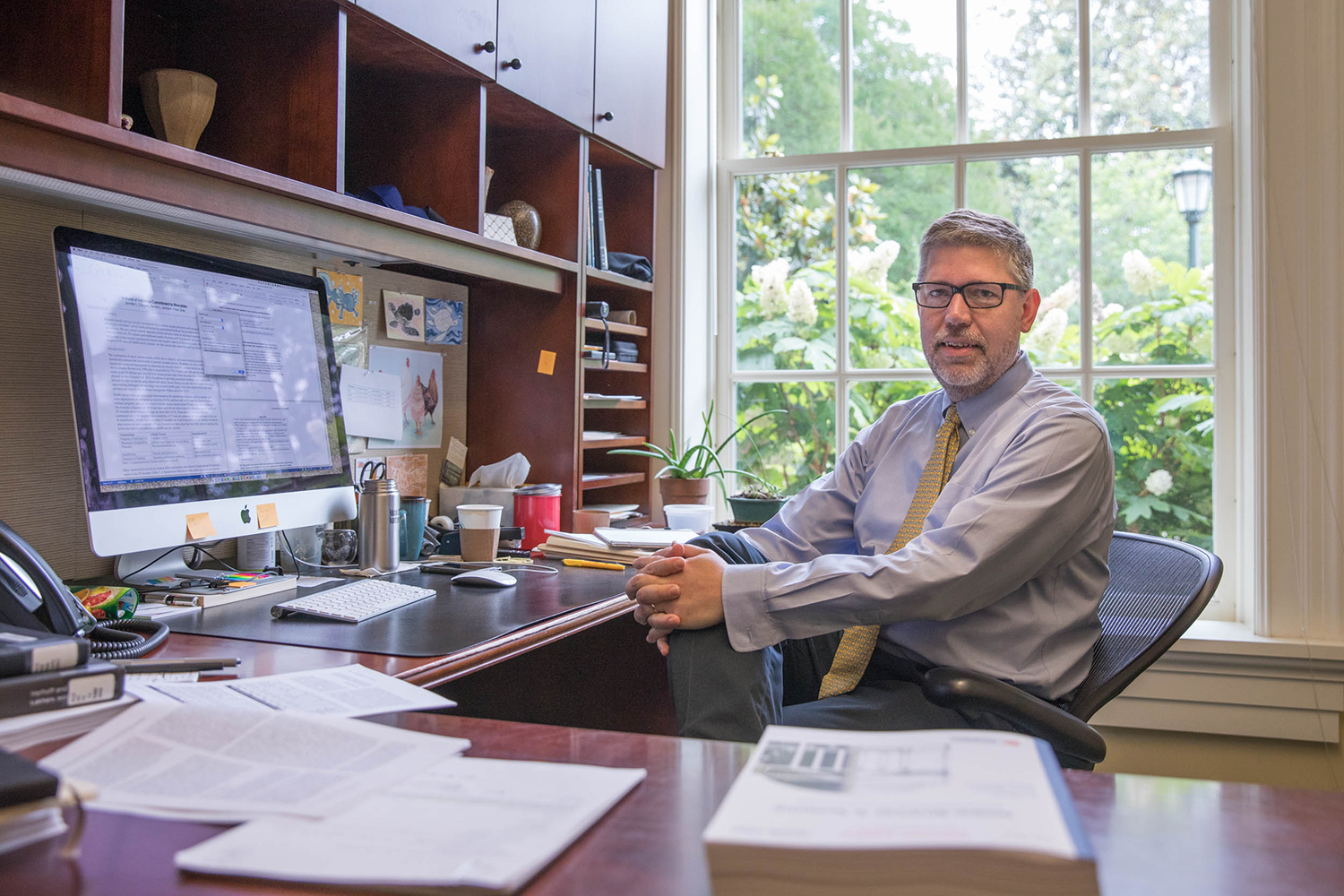Many of today’s trendiest technology firms are known for shedding hierarchy in favor of decentralized, self-managed teams. However, new research from a University of Virginia business professor indicates they might be missing one key step that could improve the bottom line – as well as office morale.
McIntire School of Commerce professor Steven L. Johnson and his co-authors, HEC Paris professor Srinivas Kudaravalli and McGill University professor Samer Faraj, studied 484 employees on 71 teams at a large software development firm that requested anonymity. Their findings, released in the MIS Quarterly scholarly journal in March, were also published in the Harvard Business Review.
The study analyzed two approaches to project management: decentralized, self-managed teams like those popularized by Silicon Valley tech startups, and more centralized, hierarchal teams with just a few decision-makers.

Designed by Julie Land
As most managers know, each model comes with advantages and disadvantages, and the debate around them has swirled for decades.
Centralized teams follow a more traditional model, which Johnson likens to sports teams with a head coach overseeing the enterprise and giving orders. Though very organized, this hierarchy can limit ideas and create unnecessary bottlenecks.
At the opposite end of the spectrum are the self-managed teams with decentralized decision-making power that many tech firms have adopted. Those teams allow more people to contribute ideas, but can be less efficient because they require more coordination.
Johnson and his co-authors proved that the most successful teams were not those that adopted either one of these models, but those that combined them in a certain way. Teams that were more decentralized during the design phase – brainstorming software solutions – and more centralized during the implementation phase – making the software reality – were the most successful.
“The critical thing is the pivot,” Johnson said. “In the beginning, it’s important to have more voices with an equal say. That richness of perspective will help you get the best solution. However, when actually building solutions, you need a clear, hierarchical structure so that people know exactly who is responsible for what.”
In Johnson’s study, teams that made that pivot had better performance ratings, less team conflict and higher client satisfaction. In fact, the change in management style was a better marker of success than the size of the team, the nature of the work or any other measure.
“This is something that some managers have stumbled upon intuitively, but it has not really been articulated or proven until this study,” Johnson said.
Arin Sime, CEO of Charlottesville-based WebRTC Ventures, said Johnson’s findings resonated with him. Sime is a two-time UVA graduate, studying engineering as an undergraduate before returning to the Commerce School’s master’s in management of IT program. His company builds videochat software customized to a particular business or need, such as software for telemedicine.
Sime, who spoke with Johnson about the research, begins software development projects with decentralized teams.
“At first, bringing in people across disciplines and with different expertise maximizes the creative benefit of group brainstorming,” Sime said. Then, he said, teams gradually become smaller and more focused to finish a project.
“Recognizing the different project phases and adapting your team to that phase is a great insight,” he said.
The researchers’ data showed that moving from decentralized to centralized teams was especially helpful with particularly novel or complex projects. They used a concept called tacitness – how difficult the knowledge is to transfer or communicate to another person – to measure a project’s difficulty.

“On a project with high tacitness, it is even more important to tap many people’s expertise at first, and then to switch to a more hierarchal structure, where the people with the very best knowledge of the task are the ones making the decisions,” Johnson said.
Sime cited a project his firm is working on for Major League Baseball and Fox Sports. They are creating an interactive broadcasting solution allowing journalists and athletes to videochat on air with fans calling in from their phones or computers.
“Because this software is rather unique and innovative, it was very helpful early on to have a larger and more diverse team brainstorming ideas and designing prototypes,” he said. “Now that we are out of the design phase, though, it’s more helpful to have a small, focused team with direct control over the technical aspects of the project.”
Johnson believes this core concept can be applied well beyond software development; in fact, in any industry. Examples he cited range from architecture and engineering projects requiring community feedback to wedding planning and other major event-planning efforts.
“In any given work environment, one of the challenges is knowing how many people to involve in a project and how to turn a great idea into a great end product,” Johnson said. “Our study can help answer that question.”
Media Contact
Article Information
June 21, 2017
/content/planning-weddings-creating-software-one-strategy-could-make-it-work

